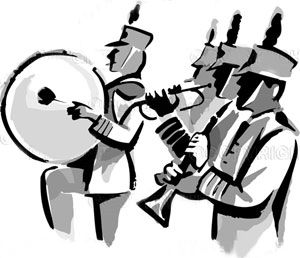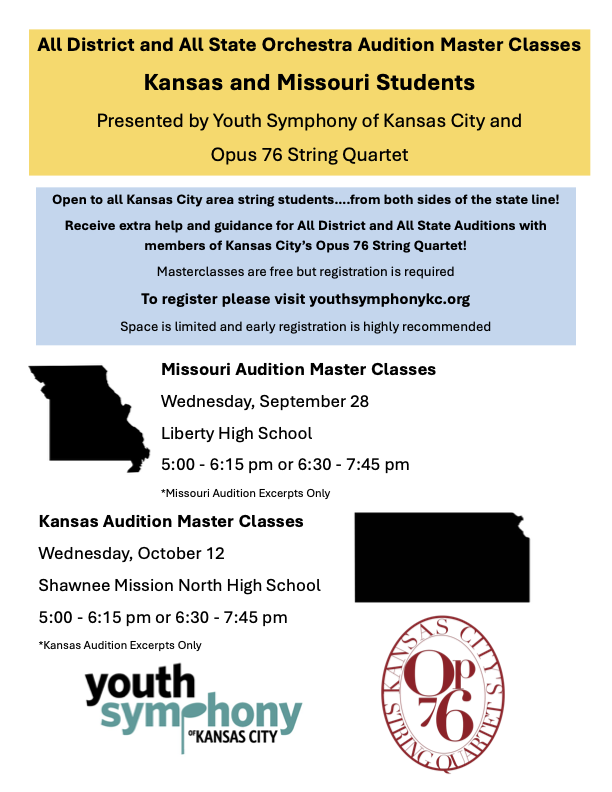Monday, September 19, 2022

For our band director friends, September can only mean one thing: marching band is in full swing! Ask the marching band, "how many of you joined the marching band because you really like marching technique?" I suspect you won't see many hands. If you ask who joined because the playing sounded cool, I bet you will see most of their hands. However, one of the surest ways to sound badly on the field is to let the visual element lag behind. Not to mention that many judges can't help but hear with their eyes; if something looks atrocious, it takes a special objectivity to credit good playing.
The trick is to build some enthusiasm about the visual component. Here are some ideas to help focus their thinking and get them back into an active learning style.
-
One Step Size, One Path.
We all know the student that takes a 16 count move and turns it into a 12 count move with 4 counts of marking time. We also see the student whose path is either inconsistent or simply not a straight path. You can get the students' brains going by insisting that they use one step size and one straight path. Pick a set that looks poor in transition. Have them march that set, but commit, absolutely commit, to using only one step size and only one path, as long as no one will be hurt by them doing it. Have them say their coordinate for their starting set, say their coordinate for the next set, point to the blade of grass that is their dot (aim small, miss small), and march the set. If you see students who take great big steps in the first half of the move, then condense their stride to hit their dot, use this as a teachable moment...that was the wrong choice during this activity! What they SHOULD have done is march way past their dot. The students will think you have lost your mind, but in this exercise you want them to end up where one step size and one path would have taken them, error or not. They must keep that step size and path consistent, especially if it turns out to be wrong in the end. However, if they do this, they will get frustrated by missing the dot when they KNOW they made a mistake before the move is even completed, and they will make a correction next repetition from purely intrinsic motivation. In addition, they will have an idea of how far off they were, which is lost if they change their step size in the middle of a move.
-
Check and Adjust Done Right.
This works GREAT in conjunction with #1. Have the students end a move in minus one (the last step of the move, count 16 many times...do not take step one of the next move). Have them freeze in that position, and don't go on with rehearsal until every single member freezes. Then have them do the following sequence: "Check with your eyes." "Adjust with your body." Then either "Mark off this set" or "Standby." The trick is once again to not go on until you see exactly what you intend to see. "Check with your eyes" means that they still have their instrument or equipment in playing / spinning position, they still have their feet in minus one, and they do NOT move anything but their heads and eyes. It should look like a whole bunch of bobble heads as the students look around to figure where they should have ended up based on the clues available to them on the move….yard lines, hashes, top of the numbers, front sideline, etc. But they should stand there in the wrong spot they ended up in for a moment. They will want to move, want to correct it, but it does no good to correct it right now. The best benefit comes from the students recognizing where they should be compared to where they are. Then when they "Adjust with your body," the equipment is still in playing or spinning position, and the feet are still in minus one, but they are allowed to move their body to where they think they should be. No one is marking sets off, they are doing their best with the field cues to be in the right place. Then you can have them mark off the set or go to standby depending on your goals. This process is difficult to instill, but if you get them on board with this, they will get twice as much info out of each repetition. Most of the time they are ending up wherever they do, not thinking much about it, and then walking to where they ought to be.
-
"How Much Did I Miss By?" and "Mistake, Over-correction, Success"
Another level would be to have the students show you with their hands, the distance by which they missed their dot. It could be two fingers just barely apart. It could be arms stretched wide open. Then ask them to divide that distance by the number of counts. If they have their hands a foot apart, on a 16-count move, they need to add ¾" to every step. Then ask them to point in the direction they need to adjust to be closer. Are they going to be hyper accurate with this assessment? At first, surely not. But the more they are thinking about their performance rep to rep, they will get better and better.
Another habit to instill in this context is "Mistake, Overcorrection, Success." It is mind-blowing how often students will just go through the motions and make the same mistake over and over. Encourage them to follow the three-rep process. Tell them you are going to do this move exactly three times. The first time, it is what it is. There will be mistakes. You can ask the students to do all of the above tricks, and since they have information about what went wrong, ask them to OVER correct for this next rep. If they were short making their dot, they had better go past it this time by a little bit, definitely don't make the same kind of mistake. "Be bold and make new and more interesting mistakes!" This will get them in the active, experimental mindset. So, the second rep, they should overcorrect their mistake. That gives them one more rep to home in and get it right.
This three-rep model really gets the students out of the mindset that "we could be doing this set for 30 minutes for all I know." Students are capable of amazing focus if they know there is a reasonable number of times they will be asked to make corrections to the same move. You can get way more done with less time in this model.
These are just a couple of ideas to help you get the students engaged during the difficult or monotonous days of marching band season. I'm convinced there is no silver bullet to get students focused on their visual responsibilities. Can you come up with your own ways to "sharpen the saw" with their rehearsal skills? Or did you find success with one of these tips? Email me at kent@palenmusic.com and let the team know about your success!
 |
Kent Lineberry works as an Educational Representative for Palen Music Center, serving the KC Metro. In the past, he has served as an assistant band director (director of percussion) for Blue Springs High School, Brittany Hill Middle School, and Paul Kinder Middle School in the Blue Springs School District. He also previously served as an assistant band director (director of percussion) at Rockwood Summit High School and Rockwood South Middle School. He is an artist for Pearl Drums, Sabian Cymbals, Evans Drumheads, and Innovative Percussion sticks and mallets. He has been a percussion and visual adjudicator throughout the Midwest for two decades, and writes drill and staging for competitive marching bands and indoor drumlines. Kent has also been fortunate enough to teach clinics on percussion in the Midwest and in Europe. He served on the Percussion Advisory Board for WGI in 2009. He also served as the Vice President (2012 - 2014) and as President (2014 - 2016) of the Missouri Chapter of the Percussive Arts Society. |

| (417) 882-7000 | (573) 256-5555 | (816) 792-8301 |
| (417) 781-3100 | (405) 896-8111 | (479) 464-8877 |
| (918) 286-1555 | (636) 229-1904 | (417) 882-7000 |
